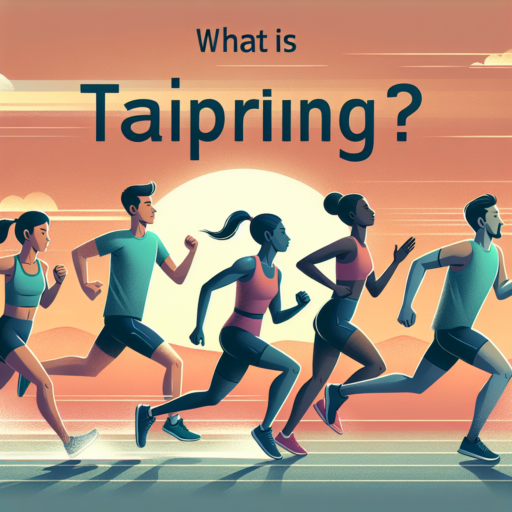What does progressive mean in running?
In the context of running, the term «progressive» refers to a specific approach or strategy that focuses on gradually increasing the intensity, pace, or distance over the course of a run. This method is strategically utilized by runners to enhance their endurance, speed, and overall performance. It’s a deliberate tactic, contrasting with starting at one’s maximum pace or maintaining a uniform speed throughout.
The Significance of Progressive Runs
By carefully modulating effort, runners can manage their energy more effectively, ensuring that they finish stronger and faster than they start. This approach not only helps in building stamina but also plays a crucial role in improving cardiovascular efficiency and muscular strength. Progressive running allows athletes to simulate the final push of a race, enabling them to develop mental and physical resilience.
Progressive running can be broken down into various forms, such as progressive distance runs, where the runner increases the distance with each session, and progressive pace runs, in which the speed is incrementally increased during the workout. Both techniques aim to push the runner’s limits comfortably and efficiently, minimizing the risk of injury and overtraining.
Implementing a progressive methodology in training routines ensures that runners can better handle the demands of longer races or faster paces, making it a cornerstone strategy for both novice and experienced athletes. Through disciplined practice, runners can achieve significant improvements, making every mile more purposeful and effective.
No se han encontrado productos.
What is a progression run on Strava?
A progression run on Strava is a specific type of running workout that focuses on gradually increasing speed over the course of the run. This exercise format is favored by many runners for its simplicity yet effective methodology in improving endurance, speed, and overall running efficiency. Unlike a straightforward run at a consistent pace, a progression run starts at a runner’s comfortable pace and incrementally increases to a more challenging speed towards the end.
Strava, the popular fitness tracking app, enables runners to meticulously track their progression runs, providing detailed analytics on pace, distance, and effort throughout different segments of their run. This data is invaluable for runners looking to analyze their performance and make informed adjustments to their training routines. By utilizing Strava’s features, athletes can monitor their progression in real-time, encouraging a focused and strategic approach to their runs.
The goal of a progression run is not only to build physical stamina but also to enhance mental toughness. By pushing through the mild discomfort of speeding up when your body has already covered considerable distance, runners develop resilience. Furthermore, practicing progression runs on Strava allows athletes to visually track their improvements over time, adding an element of motivation and tangible benchmarks for success.
What is the principle of progression running?
The principle of progression in running is a fundamental concept that emphasizes gradual improvement and increased intensity or distance over time to avoid injury and improve running performance. It highlights the importance of not rushing the process but instead allowing the body to adapt to the stresses of running at a pace that is sustainable and beneficial in the long term. By adhering to the principle of progression, runners can systematically build their endurance, speed, and overall fitness in a way that supports continued improvement and minimizes the risk of burnout or overuse injuries.
One of the key aspects of the principle of progression is the concept of overload. This involves gradually increasing the volume (distance or time) or intensity (speed or incline) of runs to challenge the body, prompting it to adapt and become stronger. However, this increase should follow the principle of moderation to ensure that the changes are manageable and do not overwhelm the body’s capacity to recover. A common guideline often followed is the «10 percent rule», which advises runners not to increase their weekly mileage by more than 10 percent from one week to the next.
Implementing the Progression Principle
- Start with a solid base of mileage before introducing significant increases in volume or intensity.
- Incorporate recovery weeks by reducing mileage by 20-30% every fourth week to allow the body to recover and adapt.
- Gradually add speed work or hill repeats to enhance endurance and strength, starting with shorter distances and progressively increasing them.
What is a progression tempo run?
A progression tempo run is a specific type of workout designed for runners looking to improve their endurance, speed, and overall running performance. This dynamic training approach gradually increases the runner’s pace over the duration of the run, making it an effective strategy for building both mental and physical endurance. Typically, a progression run starts at a comfortable pace before incrementally picking up speed, ending at a pace that challenges the runner, but is still manageable.
The key component of a progression tempo run is the structured increase in speed. It divides the workout into segments, each faster than the last, pushing the runner to adapt to the changing intensity. This method is particularly beneficial for long-distance runners and marathoners, as it simulates the late-race effort required to finish strong. By incorporating this type of run into their training plan, athletes can improve their pacing strategy and increase their stamina over time.
Implementing a progression tempo run into a training regimen requires consideration of both current fitness levels and overall training goals. It is essential to warm up properly before starting and to increase the pace in a controlled manner, ensuring the final segment is run at a tempo intensity—where speaking in full sentences becomes challenging, yet not impossible. The progression run can be tailored to suit various distances, making it an adaptable workout for runners of all levels.




